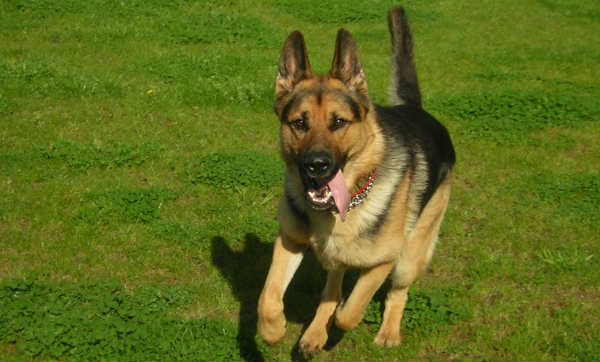
This post may contain affiliate links. We are compensated for referring customers to our affiliate partners.
Negative reinforcement dog training has earned itself a pretty poor reputation. After all, when you see something that uses the word “negative” to describe itself, that usually doesn’t bring on the happiest of thoughts! But is negative reinforcement all bad? Absolutely not! In fact, it’s a critical part of having a well balanced and trained dog. However, there are many things to consider before using any type of negative reinforcement training.
Negative reinforcement can, and should, be used in a very low stress manner. All you are trying to do is communicate to your dog when your dog performs an undesirable behavior. That’s it! Negative reinforcement should never be used when you are feeling frustrated or angry with your dog and negative reinforcement should never cause physical harm to you dog, either.
Setting Clear Rules With Your Dog
Most people don’t enjoy using negative reinforcement dog training techniques. However, properly using negative reinforcement is a very important step in having a well balanced, well behaved, and mentally stable dog you can take anywhere. Dogs are pack animals and are always seeking out someone to lead the pack. You must be that leader. If you don’t take the position of pack leader, your dog will, and that’s something which will not work out well for you. As a leader, you must show your dog that you’re the boss and there are very clear rules. When the rules are clear, not only will have you a stable and balanced dog, but you’ll be able to take your dog virtually anywhere without the fear of your dog misbehaving. This results in a happier dog that gets to enjoy more freedoms in life and a happier you, because who doesn’t love being around a happy, healthy, and well behaved dog?!
What Is NOT Required Of You
I’d like to quickly explain what you will not be doing while properly using negative reinforcement. Any trainer who wants you to do any of the following should be avoided. You will not be required to physically harm your dog, yell or scream at your dog, hit your dog, or terrify your dog. In addition, you should never, ever use negative reinforcement techniques if you’re frustrated or angry with your dog. Let’s face it, we all get frustrated and angry with our dogs. That’s ok and there’s no need to feel bad about that. It happens to everyone! But that’s not the right time to use negative reinforcement. At any point during training, if you begin feeling angry or frustrated, you need to take a little break. Training should be FUN for both human and dog. If you’re not having fun, you’re doing something very wrong.
What IS Required Of You
In order to use negative reinforcement training techniques you will be required to show your dog when he or she has performed an undesirable behavior. There are different levels of negative reinforcement which are used at different times. Taking a toy or treat away from a dog, for example, is considered negative reinforcement. Ignoring a dog who is seeking your attention is also negative reinforcement. So is using physical force or redirection such as using a prong collar, shock collar, or leader collar. In essence, you will be required to punish your dog. The level at which you choose to use negative reinforcement is ultimately up to you and your trainer. Luckily with dogs, punishments only need to last for a very short duration, many times less than a second (literally).
Humane Ways To Use Negative Reinforcement
Let me make something very clear. Negative reinforcement is only abusive if you make it that way! Further, you should never use negative reinforcement exclusively. It should always be used in conjunction with positive reinforcement techniques. The articles below will show you how to find that balance and will show you what negative reinforcement is like. These are not complete guides or replacements for professional trainers. It’s for those who have an open mind and want to educate themselves on the various dog training methods available. Armed with this knowledge, you’ll be able to choose a great trainer who uses just the right balance of positive and negative reinforcement.
